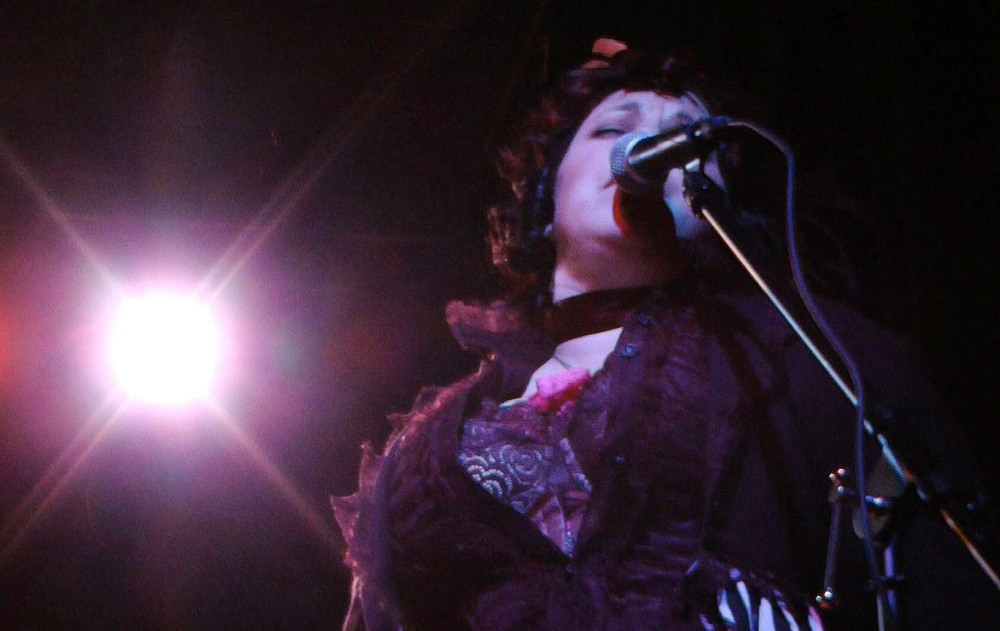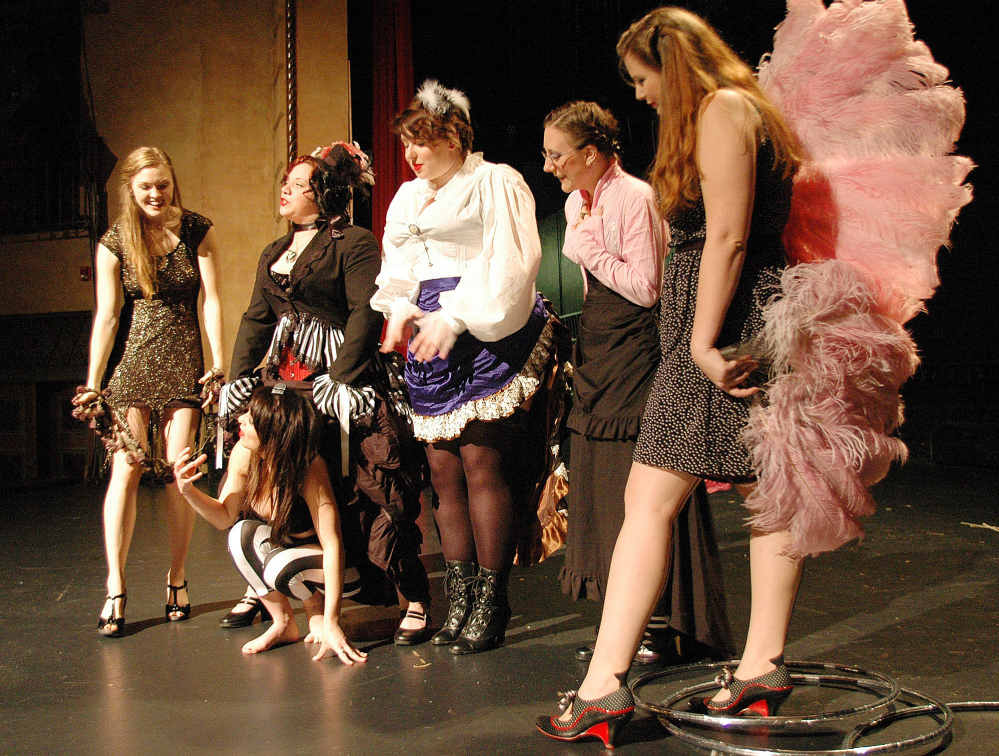TUSCALOOSA, Ala. — A jazzy band behind her and 100 people crowded into a bar before her, the evening’s emcee walked on stage wearing a Victorian outfit of corsets, bustles, bloomers and a feathered hat.
“Hi everybody, I’m Mama Dixie,” she said, tattoos on her arms and a dress that prominently displayed her cleavage. “I’m the madam of the Pink Box Burlesque.”
With a playful shake of her rear, cheers and hoots rise out of the smoky room. They get a lot louder in a few minutes when another performer is slowly peeling off clothes.
Welcome to modern burlesque. It’s a revival of an art form that had its heyday in the early 1900s, faded in the 1960s and began making a comeback about 20 years ago. Major cities like Los Angeles, New York, Chicago, New Orleans and Atlanta have burlesque troupes and acts where once none or just a few existed. So do smaller cities like Asheville, N.C., Akron, Ohio, and Tuscaloosa, home of the Pink Box Burlesque, now in its seventh season.
Previously the province of shapely working-class women performing for male audiences, today’s burlesque features a wide variety of body types and includes varied acts: Contortionists, comics, live bands, aerialists, acrobats, fan dancers, tap dancers, torch singers and the occasional hula-hoop artist.
Oh, and “pasties,” the stickers that adhere to the breast to cover the nipple and areola.
At a show of the Pink Box Burlesque, the audience was nearly as varied as the cast. College-age guys mingled with retired couples; a group of young women yelled encouragement from the side.
Nearly all performers use stage names, and few will reveal their legal names publicly. Mama Dixie, CEO and co-owner of the Pink Box Burlesque, said that’s because many fear backlash from being associated with a form of theater that not only includes partial nudity but makes fun of all sorts of things, religion and politics included.
“There are some of our performers who have legitimate concerns about what would happen if people at their regular jobs knew what they were doing,” she said.
Using the stage name Dee Milo, partly to hide her true identity and partly because it was catchy, Dorothy Lonnecker performed burlesque for about 16 years, ending in 1965. Lonnecker didn’t publicly reveal her real name until a revival performance around 1995.
Today’s performers talk about empowerment and being comfortable with their bodies. That mental attitude combined with societal acceptance has led to a difference between the shows of today and those of the ‘40s and ‘50s, Lonnecker said.
“The gals used to be more on the thin side,” said Lonnecker, 83, of Salt Lake City, Utah. “Today they’re taking gals who love themselves the way they are: Thin, fat, whatever. There’s one who uses a wheelchair.”
Expert Rachel Shteir of DePaul University traces the current popularity of burlesque to a wave of feminism that began in the 1990s.
While “classic” burlesque consisted of women undressing and men telling jokes, she said, today’s shows are more varied and have higher production values.
“They use performance or really lavish production numbers which very few burlesque performers could access in the day,” said Shteir, author of “Striptease: The Untold History of the Girlie Show.”
The trend was the subject of the 2010 movie “Burlesque” starring Cher and Christina Aguilera, and the 2001 movie “Moulin Rouge!” is sometimes credited with helping popularize the form.
New Orleans is among the cities experiencing a revival, with more than half a dozen troupes with at least 100 dancers.
Burlesque had all but faded from the city’s entertainment scene when stages were pulled out of clubs and replaced with stripper poles years ago. But today on touristy Bourbon Street, across from a row of modern-day strip clubs filled with topless women, live blues and jazz bands take the stage with vaudeville-style tease dancers at Irvin Mayfield’s Jazz Playhouse.
Cherry Brown is among the newcomers. She grew up on a chicken farm on the outskirts of Cleveland and was introduced to burlesque until she moved to New Orleans about five years ago when she was 19. Smitten, she started taking classes and began working as a “stage kitten,” moving props and opening curtains for other dancers.
Brown has since become known for her 1920s “cutsie” look while performing burlesque in New Orleans. She likes the slow, teasing moves of burlesque instead of the gyrations of all-out stripping.
“I have girls come up to me after shows and say ‘I’ve never felt so good about my body just watching you perform,’ and when I hear that, I’ve done my job,” said Brown.
Lonnecker, who still performs occasionally more than 70 years after she started, said burlesque has physical benefits for someone her age.
“If you do bumps and grinds you loosen up that lower back,” she said. “It’s good for you.”
Send questions/comments to the editors.





Success. Please wait for the page to reload. If the page does not reload within 5 seconds, please refresh the page.
Enter your email and password to access comments.
Hi, to comment on stories you must . This profile is in addition to your subscription and website login.
Already have a commenting profile? .
Invalid username/password.
Please check your email to confirm and complete your registration.
Only subscribers are eligible to post comments. Please subscribe or login first for digital access. Here’s why.
Use the form below to reset your password. When you've submitted your account email, we will send an email with a reset code.